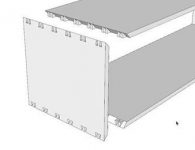

The Porsche Taycan is certainly ‘a moment’ for electric cars, albeit one of many EV landmarks coming in 2020. It takes a familiar recipe shared with the Tesla Model S, of a high-performance electric saloon car, but adds decades of sports-car-making experience into the mix, along with a unique 800-volt power system and two-speed gearbox, faster charging and a digital display-strewn interior.
All this, Porsche insists, adds up to create an electric car with a character of its own, and one which will lay the foundations for more battery-only Porsches in the near future.
To test this claim for ourselves, we took the £115,858 Taycan Turbo on a road trip spanning Luxembourg and Germany, including a battery top-up at a freshly installed Ionity charger.
Performance
First, let us get the performance stats and tedious Tesla comparisons out of the way: both the Taycan Turbo and Turbo S produce 460kW (625PS, or metric horsepower), with two motors sending their power to all four wheels. However, with Launch Control active, each car has its power increased with an over-boost function.
For the Turbo this means 500kW (680PS) for up to 2.5 seconds, while the Turbo S treats its tyres to 560kW (761PS) for the same duration. Maximum torque figures for the two models are 850Nm and 1,050Nm respectively, and all this means 0-60 mph times of 3.0 seconds for the Turbo and 2.6 seconds for the Turbo S.
Those stats fall slightly short of the 2.4 seconds a full-fat Tesla Model S is capable of, but, perhaps crucially, the way the Porsche’s shove is sustained for longer after the initial launch makes it feel more potent.
It’s the kind of acceleration that is at first giddy and addictive, but quickly borders on the unpleasant, especially from the passenger seat. We are undoubtedly at a point with electric car performance where acceleration figures have become meaningless, and arguing over tenths here or there, when the 0-60 figure is already below three seconds, is a waste of time, energy and countless discussion forum threads.
Giving electric character
The Taycan’s story is one which extends far beyond the point-and-shoot performance Tesla has made its bread and butter. A car maker with the pedigree of Porsche – 19-time Le Mans winning, no less – needs to offer a more complete performance package if this move into electrification is going to work. The Taycan, despite its vast 2,300kg heft and saloon-car sensibilities, needs to feel like a Porsche and drive like a Porsche.
And, in short, it does. The seating position is lower than you might expect for a car of this size, falling somewhere between that of the 911 and Panamera, with a steering wheel borrowed from the former. A further bid to keep the car’s hips and roofline low are what Porsche calls ‘foot – or boxy cutouts in the battery pack which give rear-seat passengers somewhere to put their feet, thus lowering the seat position.
From behind the wheel, the Taycan hides its weight surprisingly well, and with the half-ton battery pack in the floor, the car has the lowest centre of gravity (and drag coefficient) of any road-going Porsche.
With its half-ton battery pack hidden in the floor, the Taycan has the lowest centre of gravity of any road-going Porsche
Porsche
Turn-in is sharp and predictable, but arrive at the apex with a little too much speed and the weight makes itself known, pushing the nose wide. A hearty stab of the accelerator on corner exit will unstick the rear, but even in its more lax setting the stability control system quickly dials back the power and calls time on any driver shenanigans.
An earlier passenger ride with all of the computer aides switched off demonstrated that, yes, the Taycan can certainly dance when provoked. But remember, this is a (fairly) sensible saloon car, not something from Porsche’s GT division.
Ride quality is excellent, thanks to adaptive three-chamber air suspension on all models, and the 20-inch wheels of our Turbo test car, an inch smaller than the Turbo S’s.
Porsche’s goal with the Taycan and its unique 800-volt architecture is to create an electric super saloon which offers repeatable performance without the overheating or power drop-off suffered by 400-volt EVs, including Teslas. The higher voltage means lower current and less heat, which means sub-3.0sec visits to 60 mph can be made over and over again. We didn’t notice any reduction in performance after a full day of driving.
Also unique to the Taycan is its two-speed gearbox. Where other EVs have a single gear, the Taycan employs first when accelerating hard from low speed, before shifting to second at around 50-60mph. The change isn’t felt, but can clearly be heard when the car’s Electric Sport Sound system is switched on. This takes a recording of the whining motors and drivetrain, then amplifies it into something which is recognisably a car going through the gears, but with more than a hint of sci-fi added to the mix. A second sound is emitted outside to warn pedestrians of your presence.
A further bid to appeal to petrol heads is how the Taycan doesn’t default to regenerative braking when you lift the accelerator. While other EVs can be driven mostly with one pedal, such is the strength of the regen feeding kinetic energy into the battery when you lift, Porsche says this lacks the predictability its drivers are used to.
Instead, lifting in the Taycan causes it to coast like an internal combustion engine car. By default, the regen system only kicks in when you press the brake pedal, with the discs and callipers imperceptibly stepping in during hard braking only. Porsche says that 90 per cent of braking events will be done with regen alone, so the steel discs of the Turbo have a tungsten coating to prevent them rusting due to lack of use. The Turbo S gets ceramic discs as standard.
Interior tech
Gone is the Panamera’s abundance of buttons and toggles, and instead all have been replaced by up to five displays.
First, there is the 16.8-inch curved glass display behind the steering wheel. The default layout harks back to the five-dial setup that is a part of Porsche’s DNA as precious as the 911’s rear-engined layout. It feels recognisably Porsche, but with a dose of requisite modernity. At its edges there are eight haptic touch buttons for controlling headlights, suspension and traction control.
To the side of this is the Taycan’s main infotainment display. A 10.9-inch touchscreen, the system works much like the rest of the range, but with some UI changes. Stepping from a current 911 or Panamera to the Taycan is like skipping a couple of iOS updates on your iPhone; the same, but different. Speaking of smartphones, the Taycan supports Apple CarPlay but not Android Auto. Porsche clearly thinks its customers would not be seen dead with an Android phone.
Next to this is an optional second touchscreen which does everything the main screen does, but is intended for the front-seat passenger. This lets the Taycan’s co-driver commandeer the sat-nav or music without distracting the person behind the wheel. The screen is strictly for passengers’ eyes only though, as it switches off when their seat is empty.
The lower half of the dashboard houses another touchscreen, this time with haptic feedback to help the driver operate the car’s climate controls without looking. The haptic system clicks with more force than the trackpad of a MacBook, confirming your touch inputs without requiring a glance away from the road.
The Taycan’s air vents cannot be moved by hand; instead, and like the Tesla Model 3, their direction is set using the touchscreen. Naturally, putting fundamental controls like this on touchscreens requires the driver to look away at first, until they become accustomed to where everything is.
Finally, yet another optional touchscreen sits centrally behind the front seats. This gives rear-seat passengers access to climate controls. Locating this display between the rear seats, like the detachable tablet of a BMW 7 Series, would have been preferable, but space in the Taycan is at a premium. That isn’t to say tall adults aren’t welcome in the back – indeed, a fifth can sit in the middle for short journeys, assuming they get on well with their fellow passengers – but a spacious uber-limo, the Taycan is not.
Charging
Derestricted sections of the Autobahn gave us chance to stretch the Taycan’s legs, and although we fell a little short of its 162mph top speed, the car felt entirely composed deep into three figures. The drivetrain remained whisper-quiet, and the thermal efficiency of the 800-volt system means such driving shouldn’t cause undue strain to the battery pack.
Our comfort levels took a momentary dip, however, when missing the junction meant a detour and arriving at the charging station with just 4 per cent battery remaining. Truth be told, we were invited to run the battery as low as possible to see the Ionity charger working at full speed – remember, empty batteries charge more quickly than partly full ones.
Our Taycan was topped up from 4 to 87 per cent in 30 minutes, falling in line with Porsche’s claim of 5 to 80 per cent in 22.5 minutes. Ionity chargers (if you can find them) are capable of delivering power at 350kW (compared to 250kW from Tesla’s new third-generation Supercharger), but for now the Taycan is limited to 270kW.
Taycan buyers get three years’ free access to the Porsche Charging Service, which uses a single user account and contactless card to activate thousands of chargers from various power providers, including Ionity in Europe and Electrify America in the US. Ionity has 148 stations across Europe at the time of writing (but sadly only a couple in the UK), and the plan is for 400 stations with four to six outlets each by mid-2020.
When full, the Taycan Turbo has a range of 237 to 280 miles, and the Turbo S offers a claimed 241 to 256 miles.
Verdict
For its EV debut, Porsche has aimed at the very top of the market. So while the £140,000 Taycan Turbo S might sound pricey compared to other electric super saloons, rest assured, more affordable versions will be along soon enough.
Before then, Porsche has the top of the EV market to itself. The Taycan manages to retain enough of the brand’s DNA and heritage to be recognisably a Porsche – in the way it looks, drives and feels – and even injects some excitement and diversity into the inherently monochrome world of electric propulsion.
A real fear among petrolheads and makers of the cars they desire is how all-electric drivetrains act and feel broadly the same. Porsche hasn’t quite rewritten the rulebook here, but the 800-volt system and two-speed gearbox go at least some way to make this EV stand out from the rapidly growing crowd.
It is, of course, devastatingly quick, but the Taycan is also entertaining at lower speeds, has a feeling of quality missing by some rivals, and its tech-laden cabin makes a great deal of sense. More so, we would argue, than Tesla’s single, huge touchscreen.
Above all else, the Taycan is a Porsche that just so happens to be electric.
More great stories from WIRED
🤕 No-deal Brexit would trigger a huge data problem
🔓 The iOS 13 privacy settings you should change right now
🔋 Tesla has created a battery that could last one million miles
🗓️ Four-day working weeks aren’t the utopia they seem
read more at https://www.wired.co.uk/ by Alistair Charlton
Tech







